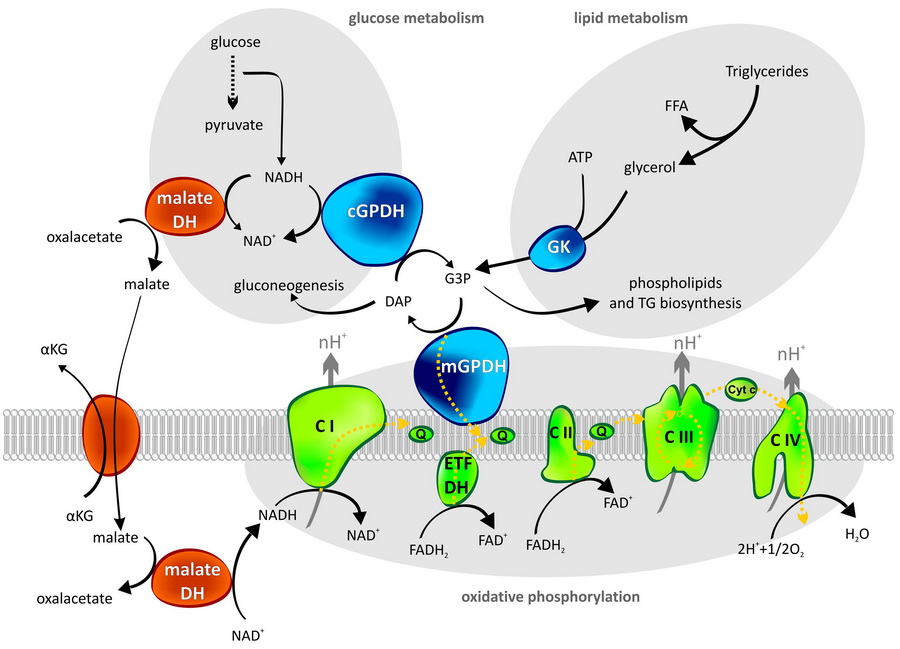Our new paper: Mitochondrial glycerol-3-phosphate dehydrogenase and oxygen radicals
There is no fire without smoke. Similarly, cell respiration does not work perfectly and its by-products – reactive oxygen species (ROS), also known as free oxygen radicals – play a negative role in the development of many diseases as well as in aging.
We don’t know the detailed mechanism of ROS production for the majority of enzymes that have been shown to generate ROS. However, a known mechanism of this process is an essential prerequisite for searching for potential therapeutic compounds. We have recently shed light on the mechanism of ROS production by one of these enzymes – mitochondrial glycerol-3-phosphate dehydrogenase. You can read the paper in BBA Bioenergetics.

The role of mitochondrial glycerol-3-phosphate dehydrogenase in cell bioenergetics.
Is an important enzyme at the crossroads of glucose metabolism, lipid metabolism and mitochondrial oxidative phosphorylation. It represents one of the pathways, how to transport reducing equivalents from cytosol into mitochondria. In this so called glycerophosphate shuttle mGPDH has its cytosolic partner – cGPDH. In many cell types, glycerophosphate shuttle is only secondary to the better known malate/aspartate shuttle, which also transfers reducing equivalents to mitochondria.
